#Auschwitz II-Birkenau
Explore tagged Tumblr posts
Text



90 notes
·
View notes
Text
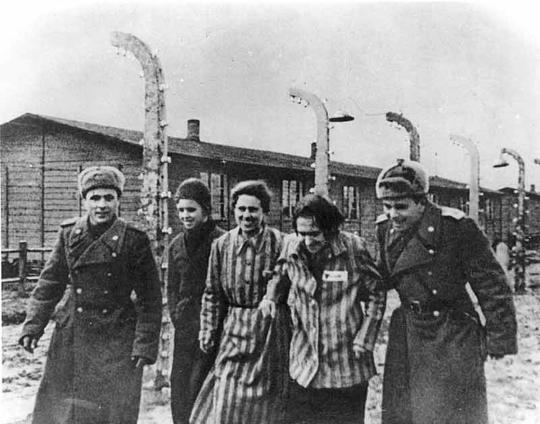
The 60th Army of the 1st Ukrainian Front liberating the Auschwitz-Birkenau concentration camp in early 1945.
#holocaust#ukrainian history#ukraine#world war 2#antisemitism#ukrainian armed forces#world war ii#concentration camp#20th century#1945#1940s#jewish history#auschwitz#birkenau#black and white#old photo#eastern europe
35 notes
·
View notes
Text






night. night without end. // auschwitz-birkenau, poland // april 2024 // ©
#my photos#photographers on tumblr#original photographers#photography#travel#auschwitz#europe#poland#photooftheday#film#polish#nazi#history#jewish history#holocaust#world war ii#holocaust museum#auschwitz-birkenau#this place fucked me up
3 notes
·
View notes
Text
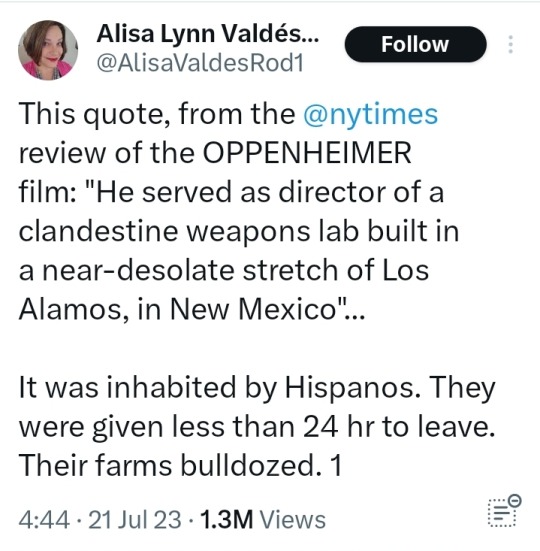
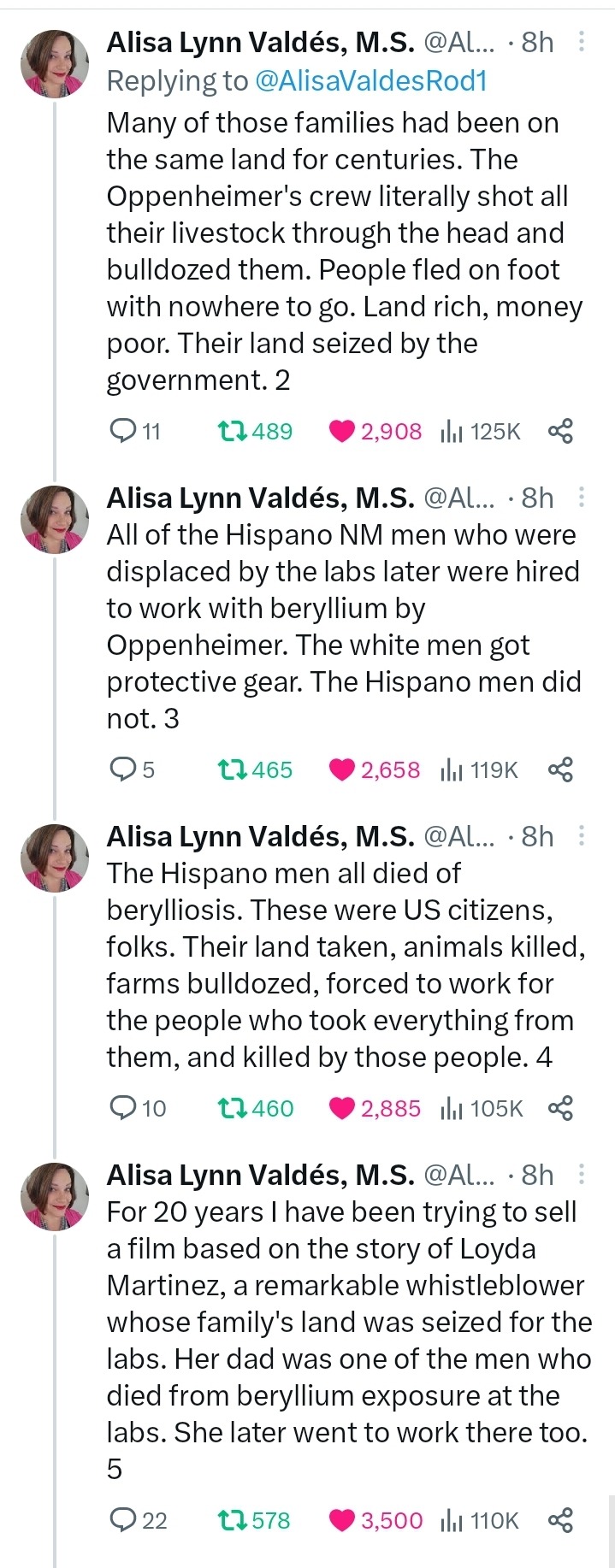

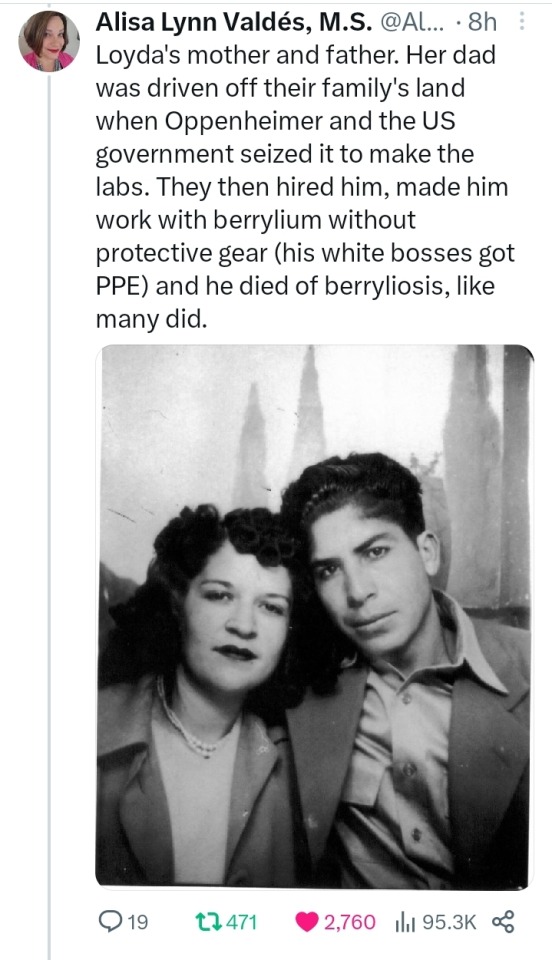
youtube
(alt included in all images)
Another thread by Senator Ben Ray Luján here.
A book on the subject (haven't read it myself):
One of the sources in another one of Alisa's furiously impassioned twitter threads have been debunked, so I didn't include that. But she claims that her own family was caught in the fallout zone when her mother was a baby, which eventually led to her and large numbers of her community developing cancer. It's human for that kind of grief to be caught up in inaccuracies. People are already being ghastly and racist to Hispanos and Indigenous people criticizing the hype for the movie. They're not attacking Oppenheimer for being Jewish, they're criticising the erasure of the human cost of these bombs and the continued valorisation of the U.S military's actions in World War II as some kind of moral saviourism.
While Oppenheimer himself believed that the nuclear bombings of Hiroshima and Nagasaki were morally justified (they had planned to drop them on Germany except they surrendered before they could), he also felt had blood on his hands and regretted his role as the "Father of the Atomic Bomb". He spent the rest of his career vehemently opposing further development of thermonuclear weapons and the hydrogen bomb accurately predicting the concept of mutually assured destruction. This eventually made him a victim of Senator McCarthy's Red Scare and his clearance was revoked. I haven't seen the movie (Christopher Nolan is the kind of casual white racist I avoid on principle) but people who have seen it say that it doesn't glorify nuclear weapons and depicts the man himself with the complex moral nuance that seems to be accurately reflective of his real life.
The backlash to Indigenous and Hispanos people's criticisms and to people pointing out that Hiroshima and Nagasaki were genocides is also frustrating because...both world wars were a clash of genocidal empires. The reason they were world wars is because the countries colonized by Japan, China, the European powers and the US were all dragged into it, whether they wanted to or not. Jews were one of the many colonized peoples that suffered in that time, who were left to die by everyone until they could be used to frame the Allied powers as moral saviours, establishing a revisionist nostalgia for heroism that powers the US military industrial complex to this day.
As early as May 1942, and again in June, the BBC reported the mass murder of Polish Jews by the Nazis. Although both US President, Franklin Roosevelt, and British Prime Minister, Winston Churchill, warned the Germans that they would be held to account after the war, privately they agreed to prioritise and to turn their attention and efforts to winning the war. Therefore, all pleas to the Allies to destroy the death camp at Auschwitz-Birkenau were ignored. The Allies argued that not only would such an operation shift the focus away from winning the war, but it could provoke even worse treatment of the Jews. In June 1944 the Americans had aerial photographs of the Auschwitz complex. The Allies bombed a nearby factory in August, but the gas chambers, crematoria and train tracks used to transport Jewish civilians to their deaths were not targeted.
(Source)
Uncritical consumption of World War II media is the reinforcement of imperialist propaganda, more so when one group of colonized people is used to silence other colonized peoples. Pitting white Jewry against BIPOC is to do the work of white supremacy for imperialist colonizers, and victimizes Jews of colour twice over.
Edit: friends, there's been some doubt cast on the veracity of Alisa's claims. The human cost to the Hispanos population caught downwind of the nuclear tests is very real, as was land seizure without adequate compensation. However, there's no record I can yet find about Los Alamos killing livestock and Hispanos being forced to work for Los Alamos without PPE. There is a separate issue about human testing in the development of said PPE that's not covered here. I'm turning off reblogs until I can find out more. Meanwhile, here's another more legitimate article you can boost instead:
#Youtube#colonialism#colonization#genocide#oppenheimer#nuclear war#nuclear testing#indigenous rights#racism#new mexico#american imperialism#world war ii#hispanos#tw: animal cruelty#loyda martinez#white supremacy#military industrial complex#generational trauma#worker exploitation#colonial trauma#hiroshima#nagasaki#war propaganda#knee of huss#twitter
899 notes
·
View notes
Text
by Debbie Weiss
Anti-Israel protesters on Monday disrupted an event at Auschwitz, the infamous Nazi concentration camp in Poland, commemorating the six million Jews killed in the Holocaust by the Nazis.
The International March of the Living, an annual Holocaust education program founded in 1988, brings people from around the world to Poland each year for Israel’s Holocaust Remembrance Day — known as Yom HaShoah — to march on the path leading from Auschwitz I to Auschwitz II-Birkenau, the Nazis’ largest death camp where 1 million Jews were murdered during World War II.
Survivors of the Hamas terror group’s Oct. 7 massacre across southern Israel joined 55 Holocaust survivors in this year’s march. However, amid the ongoing Israel-Hamas war in Gaza and the coinciding record surge in global antisemitism, anti-Israel protesters gathered near the grounds of Auschwitz, sparking outrage.
Local police put up a barricade to prevent dozens of demonstrators from approaching the marchers, who passed by as the protesters shouted slogans including “stop the genocide.”
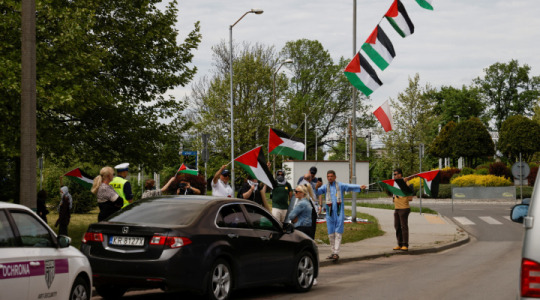
Anti-Israel protesters hold flags on the route of the annual International March of the Living, outside former Auschwitz Nazi German death camp, in Oswiecim, Poland, May 6, 2024. Photo: REUTERS/Kuba Stezycki
Marchers, many of whom carried Israeli flags, responded by changing, “Free Gaza from Hamas!” and singing “Am Yisrael Chai.”
182 notes
·
View notes
Text

Members of the Sonderkommando burn corpses in the fire pits at Auschwitz II-Birkenau. This picture was taken during the summer 1944 deportation of Hungarian Jews when ~400,000 were taken to Auschwitz and gassed. The crematoria were overworked, necessitating open fire pits.
32 notes
·
View notes
Text
Here are of some of Owens’ favorite conspiracy theories – some originate in her imagination, some in the dark corners of the web and some occasionally contain a kernel of truth.

One of Owens' regular tropes involves questioning and belittling the significance of the Holocaust. Antisemites recognize that complete Holocaust denial is unacceptable. Therefore, they will downgrade the horrors of the Holocaust to make Jews seem overly sensitive (and ultimately, liars).
Holocaust denial and trivialization is a form of antisemitism that negates the fact that Jews were the victims of the Holocaust. Rather, it presents Jews as deceiving the world. According to the Museum of Tolerance in Los Angeles, “Holocaust denial is an updated version of an alleged Jewish conspiracy in which Jews use lies and extortion to gain advantage of everyone else.”
This is precisely what Owens evokes when talking about Jews and the Holocaust. For example:
Discussing how many Germans died in the war
It is estimated that 4.2 million Germans died in World War II that Germany started. In contrast, six million Jews were deliberately slaughtered by the Nazis in their project of ethnic cleansing.
Questioning facts like the experiments of Nazi doctor Josef Mengele
Josef Mengele, a Nazi doctor at the Auschwitz-Birkenau concentration camp, conducted inhumane experiments on Jewish prisoners. He had a well-documented affinity for experimenting on twin children because he thought they were ideal test subjects in his field of interest, eugenics. His barbaric experiments exposed around 3,000 children to diseases, torture and disfigurement, and in most cases, concluded with their murder.
Obsessing about the Gulags, the Soviet prison camps
The Gulags were forced labor camps where, beginning in 1929, Soviet dictator Joseph Stalin sent dissidents. Owens claims that because there were Jews in Stalin's government, Jews invented concentration camps – not the Nazis.
The earliest internment of a civilian population is accredited to the United States in 1838, when they rounded up members of the Cherokee tribes from the southeast U.S., forcing them into prison camps before relocating them to Oklahoma.

Central to the conspiracy theory that Jews control the world lies the Mossad, the Israeli intelligence agency. Allegedly working in cahoots with the CIA, Owens and other conspiracy theorists often blame the two agencies for horrific world events.
Claiming that the Mossad was behind 9/11 is a conspiracy theory based on reports that a text message warning about the attack was sent to two workers at Odigo, a U.S. text messaging company with offices in Israel at the time.
The conspiracy theory is also based on an alleged “account” that Israelis were seen celebrating outside of the World Trade Center.
Most of these conspiracies originate in neo-Nazi online propaganda, aiming to push the antisemitic trope of Jewish people controlling the world. There is no evidence to support either of these two claims.
22 notes
·
View notes
Text
Amin al-Husseini docu: part 7
Part 1 | Part 2 | Part 3 | Part 4 | Part 5 | Part 6 | Part 7 | Part 8 | Last
Translator's notes:
-> Auschwitz as a camp was huge, bigger than most cities. It was built in parts. The initial, concentration camp was built close to (and was named after) the Polish town of Oświęcim, called in German Auschwitz. It was later expanded, too. The extermination camp, centered around the gas chambers, was built in 1942, and by that point, the entire camp's area was so big, that this part was closer to (and named after) the Polish town of Brzezinka, called in German Birkenau. The concentration camp part was nicknamed Auschwitz I, the extermination camp part was Auschwitz II, Auschwitz-Birkenau, or just Birkenau. There was also an area known as Auschwitz III, where the factories using (mostly Jewish) slaves were.
-> The Sonderkommando were Jews who had been forced by the Nazis to operate the gas chambers. They were often selected based on being less able to communicate the horrors they'd seen to other Jewish slaves in the camp, for example many of the Sonderkommando were Greek Jews (while most European Jews were Ashkenazim, who shared the common Jewish language of Yiddish, the majority of Greek Jews were Sephardim, and spoke the Jewish language of Ladino. Thus, communication between the two groups was harder). Even when the Sonderkommando were physically capable of going on with their work, the Nazis would routinely exterminate them, to wipe out the witnesses of this industrialized genocide. My wonderful colleague, who you see interviewed in this docu, Professor Gideon Greif, in addition to writing one of the most comprehensive books about Auschwitz, also recorded the testimonies of the last surviving Sonderkommando, and published them in an emotionally difficult to read, but really important book, titled We Wept Without Tears. The photograph of Shaul Chazan, one of the last sonderkommando, is from a 1993 trip to Auschwitz, where Prof. Greif recorded a few of the testimonies, as they were being given in the place they were about. This docu has now been translated into English. The book was also the basis for the Oscar-winning film, Son of Saul.
-> The Capo was a camp slave, who was appointed by the Nazis to "supervise" a group of other camp slaves. In Nazi camps where regular criminals were incarcerated together with non-criminal groups, such as Jews, the Capos were often the former, because a part of the idea behind using the Capos was to implement a "divide and rule" system, meaning the less empathy the Capo had for those under his "supervision," the better. Some Capos did what the Nazis told them to out of fear, some enjoyed their new status and were abusive to their fellow camp slaves, and some Capos tried to use the position in order to help, even save, other slaves. I'm detailing this, because there's a misconception that all Capos were traitors.
-> Dieter Wisliceny was directly responsible for the murder of over 106,000 Jews from Slovakia and Greece alone (and he helped Eichmann with the extermination of over 500,000 Hungarian Jews, too). He was arrested by the Americans and NOT put on trial at Nuremberg. Wisliceny was eventually brought to justice by Czechoslovakia, which demanded his extradition.
-> I hope it's okay to add something personal, because the docu briefly shows a translation of a letter written by the Mufti to the Romanian Foreign Minister. My great uncle is Jewish Romanian author and Holocaust survivor, Norman Manea. He wrote about a part of what my family's been through because of the collaboration between the Nazis and the Romanians, as the Jews from eastern Romania were exiled to Transnistria by the hundreds of thousands to die there, in his memoir (which was translated into English), The Hooligan's Return. I have pictures of starved Jewish kids in Transnistria, their bodies look like skeletons everywhere, except their swollen bellies (a now known symptom of starvation). I don't bring these pictures to the museum, unless I have reason to believe I may have Holocaust deniers in the group, the pics are that terrible to me. Among the rescue attempts of Jews, the Mufti stopped a plan to save 80,000 Jews from Romania, and 5,000 Romanian Jewish kids exiled to Transnistria. I can't explain how I feel about that. He never paid for his crimes, they're not even recognized, but then the anti-Israel crowd screams that this is all about "the occupation," even though the State of Israel didn't even exist during WWII, when the Mufti sentenced to death a part of my people, a part of my community, and maybe even a part of my family.
(for all of my updates and ask replies regarding Israel, click here)
#israel#antisemitism#israeli#israel news#israel under attack#israel under fire#terrorism#anti terrorism#hamas#antisemitic#antisemites#jews#jew#judaism#jumblr#frumblr#jewish#israelunderattack#al-husseini#ישראבלר
37 notes
·
View notes
Text
King Charles to visit Auschwitz on 80th anniversary of liberation
King Charles has accepted an invitation to visit the Auschwitz concentration camp in January, joining representatives from 20 countries to mark the 80th anniversary of the camp’s liberation.
The King, who visited Auschwitz in 2020 while still Prince of Wales, has long-standing ties with surviving prisoners, many of whom, despite now being infirm, are expected to take part in the commemorative ceremonies. During his visit in 2020, he warned that “hatred and intolerance still lurk in the human heart.”
Although he himself is not in the best of health, he continues his weekly treatment for cancer, King Charles is strongly opposed to anti-Semitism and intends to attend the historic event on January 27. It will almost certainly be the last such event attended by Holocaust survivors.
Organisers say he will be the first British monarch to visit Auschwitz. His mother, the late Queen Elizabeth, made her last overseas trip in 2005 when she visited Bergen-Belsen.
Although Auschwitz was liberated by the Soviet Union’s Red Army troops, it is thought there will be no official delegation from Russia at the ceremony.
Piotr Cywiński, director of the Auschwitz-Birkenau museum, said the presence of Russian representatives at the celebrations was “difficult to imagine” due to disagreements over “European values.”
Serbian President Aleksandar Vučić expressed his position on the subject, calling it perverse that Russians would not be invited to the celebrations. He said:
“Now there will be events on the occasion of the liberation of the concentration camp in Auschwitz. Those who liberated it, which were Russians, will not be invited. I assume that those who created the camp will be invited. Everything in our world is, how can I put it, so as not to sound rude, perverted in the opposite way. And this is very strange.”
The King has long been a supporter of the Jewish community, especially in Poland, where his close association with World Jewish Relief led to the opening of a Jewish community centre in Krakow. He remains a patron of the charity.
The UK government has announced additional funding to support the commemoration for the Holocaust Memorial Day Trust, of which the King is also patron.
The main events will begin at 4 p.m. in a specially constructed marquee above the gates of the former Auschwitz II-Birkenau camp with its infamous, deeply cynical Nazi slogan “Arbeit Macht Frei,” or “Work makes you free.” A freight wagon will be placed in front of the gate as a powerful symbol of remembrance.
To mark the anniversary, people across the UK will take part in a special nationwide project called 80 Candles for 80 Years. The event will be the start of several commemorative events, culminating in the 80th anniversary of Victory in Europe Day on May 8.
King Charles’s grandmother, Princess Alice, was named Righteous Gentile for sheltering a Jewish family in Athens during the Holocaust.
Read more HERE

#world news#news#world politics#europe#european news#uk#uk politics#uk news#england#london#united kingdom#royal family#uk royal family#king charles iii#king charles lll#charles iii#british monarchy#king charles#auschwitz#holocaust#jewish history#antisemitism#world war two#wwii#ww ii
6 notes
·
View notes
Text

Gypsy woman with her children, Holland, 1930s
On 10 December 1942, Heinrich Himmler issued an order to send all Romani (German: Zigeuner, "Gypsies") to concentration camps, including Auschwitz. A separate camp was set up at Auschwitz II-Birkenau, classed as Section B-IIe and known as the Zigeunerfamilienlager ("Gypsy family camp"). The first transport of German Roma arrived on 26 February 1943, and was housed in Section B-IIe. Approximately 23,000 Roma had been brought to Auschwitz by 1944, of whom 20,000 died there.
9 notes
·
View notes
Text
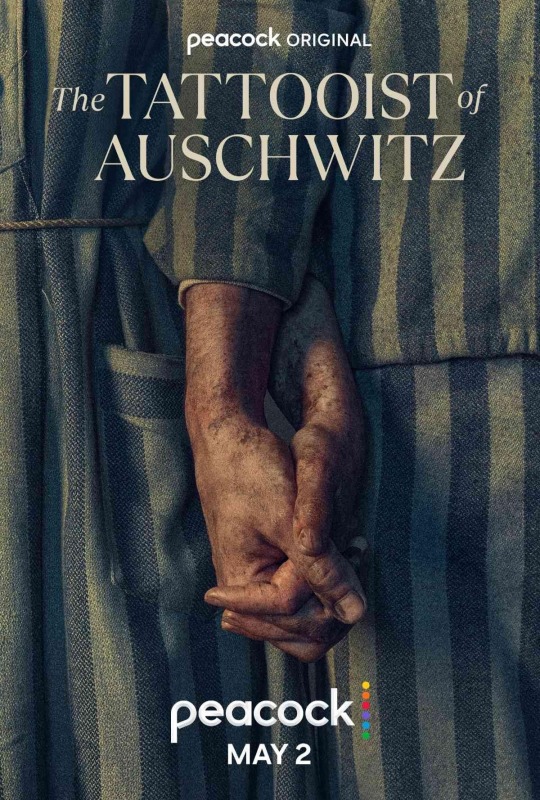
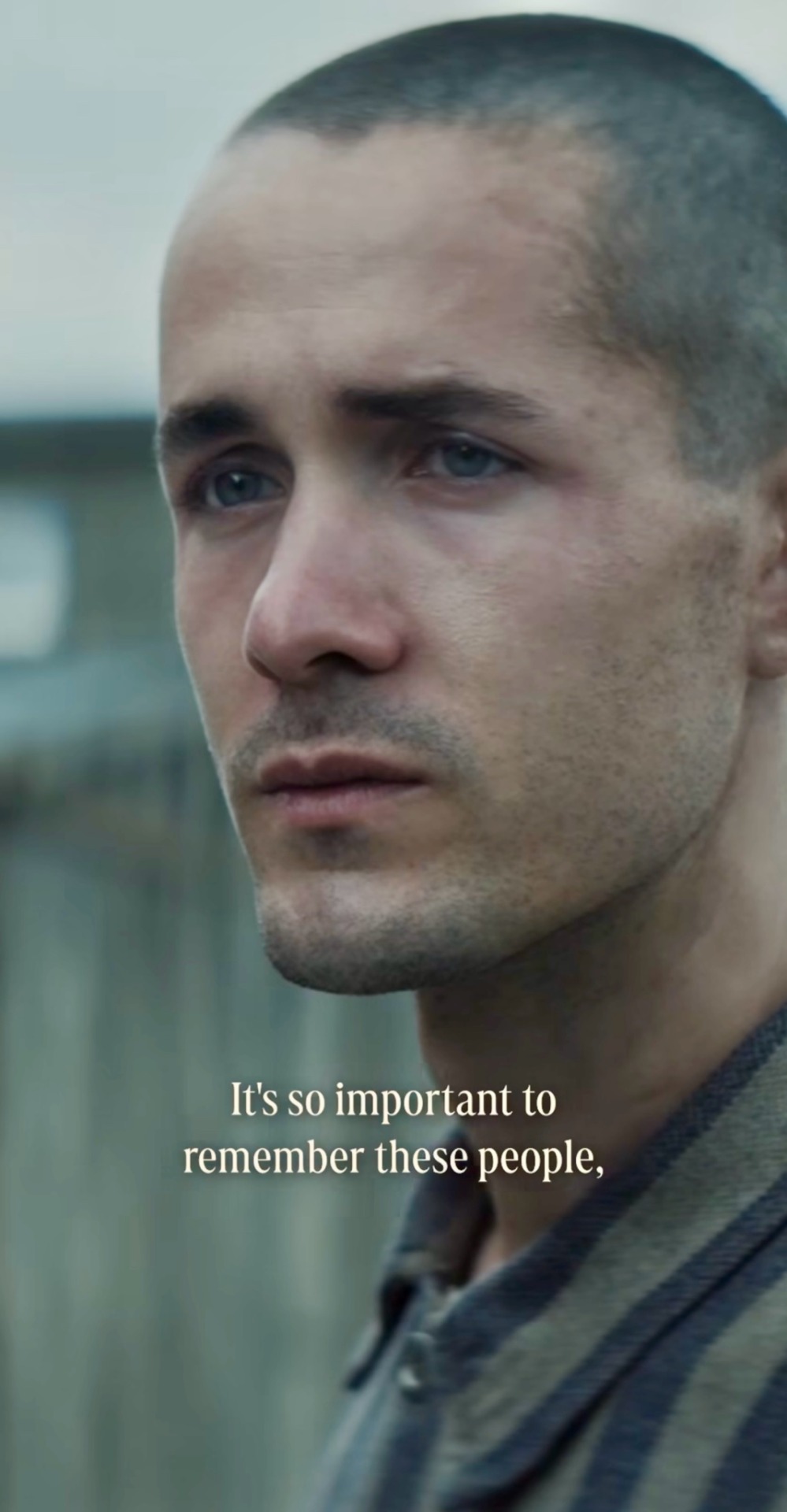
hi, I watched the series yesterday and thought I could share my little essay here. please, feel free to reach out if you saw it too, and want to talk 🥹
[I’m aware I’ve been quite loud about it in the past few weeks, but as the book’s fan, as a historic nerd, and also as Jonah and Anna’s fan, I felt the urge to write something after watching the series.] As we all know, the story of the Holocaust has been portrayed on screen many times, some of the most recognisable ones being Schindler's List (1993; Steven Spielberg), The Pianist (2001; Roman Polanski) or The Boy in the Striped Pyjamas (2008; Mark Herman) I believe The Tattooist of Auschwitz will become one of them. I think it’s very unique to tell a story like this in a way it was done by its creators. It’s important to know that the inspiration was the book written by Heather Morris, who meet Lale Sokolov in early 2000s, who was a tattooist at Auschwitz II-Birkenau after he was sent to the camp in 1942. He decided to share his life story with her, and then with the whole world. After hearing it, and then writing it, it has become Heather’s mission to spread his words. Although it’s based on his own experience, it’s historical fiction novel, which the author herself emphasises. [She said: "The book does not claim to be an academic historical piece of nonfiction, I’ll leave that to the academics and historians.”] The six-episode series directed by Tali Shalom-Ezer inspired by the book under the same name unfolds the life of a young Slovakian man who in horrific circumstances finds something, which keeps him going. The love for the Slovakian girl, Gita. The main characters, excellently portrayed by Jonah Hauer-King and Anna Próchniak, give the audience hope to see the light in the darkest of places, and that’s the most important message of the story. To remain human in the most dehumanised situation, to give love and to receive it. You can see every emotion in Anna’s face even though she doesn’t say anything in a particular scene. Her portrayal of strength, optimism, and faith in the centre of hell, brings out a light. You can see the pain in Jonah’s eyes with every "I’m sorry”, he whispers to his fellow prisoners when he’s made to put the number on their arms. They’re both intuitive, sensitive, and just brilliant actors, who carry the series alongside with equally excellent Jonas Nay as SS officer Stefan Baretzki, Melanie Lynskey as Heather Morris herself, and Harvey Keitel as older Lale, in the centre. I must say I was terrified of seeing Jonas’ portrayal on his every pace or look, which only proves how incredible actor he is. It was said by the Jonah and Jonas that they first created a bond with each other in order to later enact some disturbing, uneasy scenes. It enabled them to trust each other on the set. It was amazing to see Lynskey and Keitel acting together in scenes. Their chemistry can be really felt through screen. The idea of Lale being haunted by the ghosts of the past was incredibly incorporated, even then giving us the feelings of uneasiness, tense, and fear. As the director of the series said herself: "One misconception I would want to debunk would be that when the camps were liberated that everyone lived happily ever after. Trauma is a lifelong burden to carry for the survivors. This isn't a history lesson from the past. This is something that's very much alive.” I couldn't finish without saying something about the wonderful music that was created by Hans Zimmer and Kara Talve. You know it is good when you get shivers all over your body, and the same happens when you hear the haunting melodies of violins in the very first track. The whole soundtrack is available to listen to on music streaming platforms. This series is a must watch for everyone who read the book. It is incredibly well acted, well written, well made. You can feel the sorrow, the grotesque. The Tattooist of Auschwitz depicts the duality of the human nature on full display, showing the possibility to find a light in such a hellish place, and also unfolds the monstrous, evil side of what hatred makes of people.
#the tattooist of auschwitz#ttoa#my ramblings#no spoilers#jonah hauer king#anna próchniak#lale sokolov#gita sokolov
12 notes
·
View notes
Text

Otto Frank visits the attic where the Frank family hid from the Germans troops during World War II (1960)
The family was discovered in August 1944, after spending 761 days in hiding. It is widely believed they were betrayed by someone familiar with their hiding place, though the identity of the betrayer remains unknown. The entrance to their secret annex was concealed behind a movable bookcase but how the Nazis were alerted to or uncovered the hidden door is still unclear.
Following their arrest, Otto’s daughters, Anne and Margot, were sent to the Bergen-Belsen concentration camp. In March 1945, both tragically succumbed to typhus during a massive outbreak, just weeks before British forces liberated the camp. Anne was 15 years old and Margot was 19. They were buried in a mass grave at Bergen-Belsen and their remains were never individually identified.
Otto Frank and his wife, Edith, were sent to Auschwitz-Birkenau, one of the most notorious concentration camps. Edith died of starvation in January 1945, only weeks before the camp was liberated by Soviet troops. Otto survived and dedicated his life to preserving Anne’s diary, ensuring her voice and story would reach the world.
Otto Frank was the only member of his family to survive the Holocaust. He passed away in 1980 at the age of 91. While he is buried in Switzerland, where he settled after the war, Edith’s body was never recovered, as she perished in Auschwitz.
2 notes
·
View notes
Text
The Understudied History of Roma and Sinti During the Holocaust
Justyna Matkowska Romnja Magazine by Romnja Feminist Library, December 2023 The Understudied History of Roma and Sinti During the Holocaust
The Holocaust is one of the most horrific chapters in human history, characterized by the systematic persecution and extermination of millions of people, including Jews, Roma and Sinti, Afro-Germans, Poles, homosexuals, people with disabilities, Jehovah's Witnesses, and others. During World War II, the Holocaust tragically claimed the lives of over half a million Romani people, who endured brutal persecution by the Nazis and its allies. Despite the documented accounts and testimonies available in Holocaust archives, the story of the Roma and Sinti remains primarily marginalized within the broader Holocaust narrative and research.
Persecution and Extermination The National Socialist Party launched a ruthless campaign against Roma and Sinti, fueled by racial ideology. The Nazis intensified this persecution by passing the Nuremberg Law for the Protection of German Blood and German Honor in 1935, which deprived Jews, Roma and Sinti of German citizenship, fundamental rights, and the right to intermarry with Germans. In addition, Roma and Sinti became the subject of research at the Berlin Institute for Research on Racial Hygiene and Population Biology, which aimed to conduct pseudoscientific research aimed at categorizing "Gypsies" and examining perceived links between ethnicity and crime. These communities bore the brunt of this persecution, with over 94% of them falling victim to forced sterilization under the Nazi-imposed 1933 Law for the Prevention of Offspring with Hereditary Diseases.
Furthermore, on December 12th, 1938, Heinrich Himmler issued a decree titled 'Combating the Gypsy Plague,' mandating the registration of all Roma and Sinti individuals and the issuance of new identity cards. Subsequently, in 1940, the Nazis initiated deportations of Roma and Sinti from Germany and Austria to ghettos and camps established in Poland under German occupation. In January 1943, the Nazis established the Zigeunerlager, a family camp designed for Romani individuals within Auschwitz II-Birkenau.
The forced sterilization of Roma and Sinti women during the Holocaust is a tragic chapter in history that has left lasting consequences that continue to reverberate in contemporary society. The consequence of this tragedy of violations of human and women's rights is the continued mistreatment of Roma and Sinti women in European healthcare systems. Roma and Sinti women's deep-seated distrust of healthcare institutions can be traced back to forced sterilizations and the deep trauma and suffering that Roma and Sinti women have experienced for decades. Moreover, the violation of the reproductive rights of Roma and Sinti women had far-reaching consequences for their communities. Forced sterilizations disrupted family planning and left long-lasting social and psychological scars and trauma. It is important to note that these violations did not end with the fall of the Nazi regime, as sterilization continued throughout the post-war period and continued to affect Roma and Sinti women. To date, Romani women continue to advocate for recognition and compensation for forced sterilization, as is the case in the Czech Republic and Slovakia.
Lemkin’s Contribution Raphael Lemkin played a crucial role in ensuring that the Holocaust of the Roma and Sinti would be recognized during post-war legal trials. Even though prosecutors at the Nuremberg trials listed "Gypsies" as victims of genocide, international organizations established by the Allies did not classify Roma and Sinti as a separate legal category. This marked a significant omission in recognizing the Roma and Sinti. While the prosecutors frequently used broad terms such as "racial persecution" and "crimes against humanity" during the trial, Romani people were primarily listed among victim groups, mirroring their treatment in the genocide definition.
Challenges to Recognition Despite being victims of the Holocaust, the Roma and Sinti communities have faced challenges in gaining recognition, particularly within Holocaust education. While many European education systems include comprehensive Holocaust history in their curriculum at different academic levels, they often fail to address the experiences of Roma and Sinti adequately.
The struggle for official recognition of the Roma and Sinti Genocide, perpetrated by the Nazis and their allies, commenced in the 1960s, with key leadership provided by German Sinti and Roma activists. Commemorative events like rallies and hunger protests were crucial in drawing attention to the genocide. Despite these efforts, some German files related to the Nazi genocide against the Roma and Sinti remain lost. The Federal Republic of Germany officially recognized these crimes as racially motivated in 1982. However, the struggle for recognition of the Roma and Sinti continues to persist to this day. Roma and Sinti receive only marginal mention in mainstream Holocaust exhibitions, museums, and other sites of memory, textbooks, and research.
Archival Challenges The dominance of Jewish Holocaust institutions, such as the University of Southern California's Shoah Foundation, in preserving Roma and Sinti Holocaust testimonies raises concerns about narrative control and potential biases. Ari Joskowicz's study of testimonies from Roma and Sinti survivors highlights concerns about the accessibility and ownership of historical archives related to the Roma and Sinti victims of the Holocaust. Joskowicz emphasizes the prominent role of Jewish Holocaust institutions, positioning them as the primary repository for Roma and Sinti Holocaust testimonies. The author's analysis of the coexistence of Jewish Holocaust institutions containing collections devoted to Romani history raises queries regarding who has authority over Roma and Sinti Holocaust archives and the stories they present, emphasizing the importance of narrative control and the possibility of biased or incomplete representations when one community's history is housed within another's archival holdings.
Scholars searching archives for information about Roma and Sinti often come across interviews with Jewish survivors that mention "Gypsies", necessitating searches using different terms such as "Roma" or "Roma" rather than "Roma" and/or "Sinti". Some interviews can be insensitive, asking uncomfortable questions about Roma and Sinti. A notable example is the question about Roma "tribes", which reveals the interviewer's limited knowledge of Romani culture. This question has arisen in several interviews and has been observed to make Romani individuals uncomfortable, as it often leads to confusion about the interviewer's intended meaning. This confusion is understandable because Romani people are not organized into tribes like some indigenous groups but rather into distinct ethnolinguistic sub-groups. Additionally, it's worth noting that some interviewers, when speaking with Holocaust survivors, have used the term "Gypsy," which may be considered inappropriate or offensive by certain members of the Roma and Sinti communities.
Another significant issue concern involves the testimonies of Roma and Sinti survivors. Those accounts were collected many decades after the war, presenting challenges for survivors in recalling every detail of their wartime experiences and what they witnessed. Additionally, the passage of time has tragically resulted in the loss of many Holocaust survivors, underscoring the crucial importance of documenting these testimonies to preserve the memory of their suffering and resilience. Furthermore, it's noteworthy that a high percentage of Roma and Sinti survivors have never received any Holocaust compensation.
Conclusion In summary, the Roma Holocaust remains an under-researched and overlooked chapter in history, particularly when it comes to the experiences of various groups of the Roma and Sinti communities, including women, LGBT people, people with disabilities, and others. This omission raises the importance of intersectionality, highlighting the interconnections between Nazi and racial discrimination against Roma and Sinti. To fully understand the consequences of the Holocaust, it is necessary to acknowledge and address the intersecting forms of marginalization of the Roma community.
Comprehensive research is needed to fill research gaps on the persecution and post-war experiences of Roma and Sinti survivors. It is also essential to promote the contribution of Roma scholars to creating knowledge about the Holocaust. Furthermore, it is necessary to include education on the persecution of Roma and Sinti in school curricula to increase awareness and understanding of this often-overlooked history.
Although there are over 200 memorials across Europe that commemorate the Roma and Sinti who were murdered during the Holocaust, many mass graves of Roma and Sinti remain unmarked or undiscovered. It is crucial that governments work with local Roma and Sinti communities and Holocaust researchers to take collective action to respectfully commemorate these victims.
#Justyna Matkowska#The Understudied History of Roma and Sinti during the Holocaust#Romnja Feminist Library
9 notes
·
View notes
Text
never again...for anyone.
Mayor David Azoulai, head of Israel's Metula Council called for Israelis to "Turn Gaza into Auschwitz. Let it become a museum."
The Israeli official said, "The entire Gaza Strip should be emptied and leveled flat, just like in Auschwitz. Let it become a museum, showcasing the capabilities of the State of Israel and dissuading anyone from living in the Gaza Strip. This is what must be done to give them a visual representation."
.
Poland’s Auschwitz-Birkenau State Museum strongly condemns an Israeli mayor’s call for depopulating the Gaza Strip and turning it into an open-air memorial...
“David Azoulai appears to wish to use the symbol of the largest cemetery in the world as some sort of a sick, hateful, pseudo-artistic, symbolic expression,” a spokesperson for the museum writes on X.
.
On the same day I visited the Auschwitz-Birkenau concentration camp complex this exchange took place between an Israeli official and the museum. Some photos from the somber and terrifying trip:

The notorious "Arbeit macht frei" ("Work sets you free") gate at the entrance of Auschwitz.

Auschwitz II-Birkenau gatehouse
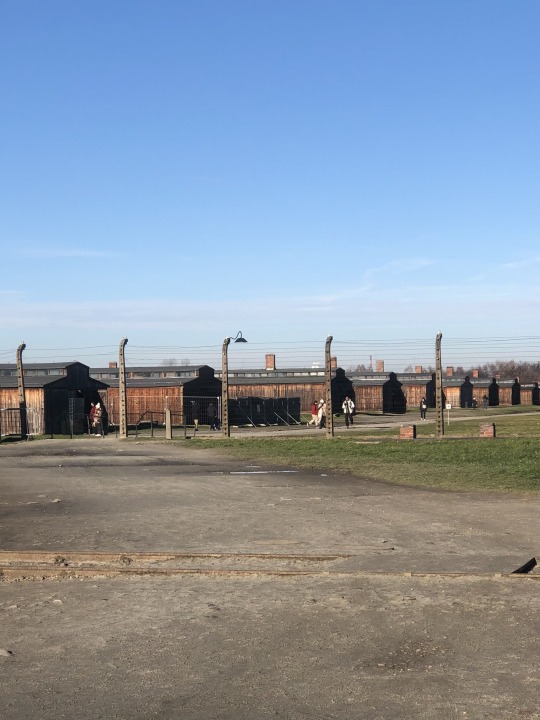
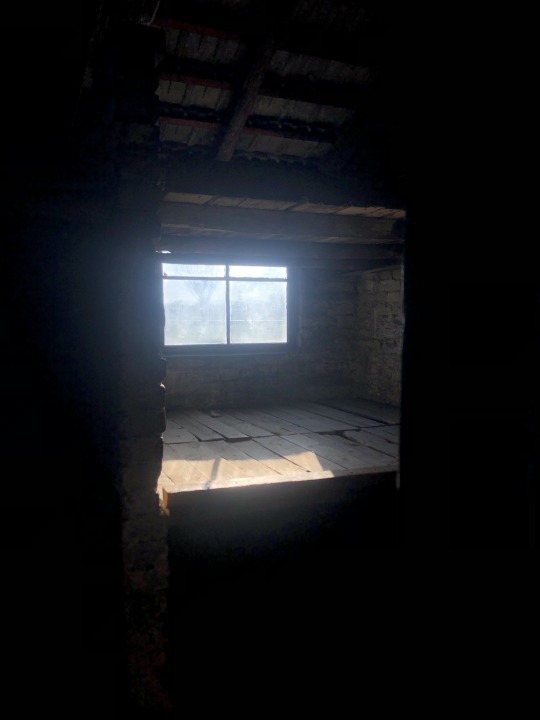
Women's barrack at Auschwitz II-Birkenau
When I think about the Holocaust, I feel an intense sense of existential vertigo. How. How could humans allow this to be done to other humans? I just can't understand it. What the fuck were people thinking? But then I look at the genocidal rhetoric Israelis are using against the Palestinians and must face that we are witnessing the normalization of genocide right now.
.
Only 1.8% of Israeli Jews think the IDF has used too much force in Gaza, in a campaign that has now (according to the Euro-Med Human Rights Monitor) killed over 25,000 Palestinians, including over 10,000 Palestinian children. "57.5% of Israeli Jews said that they believed the IDF was using too little firepower in Gaza." "48% of Jewish Israelis say that the suffering of Palestinian civilians should not be taken into consideration when planning the next phase of fighting in the Gaza Strip. 36% of Jewish Israelis said that it should 'not so much' be taken into consideration." Truly stunning, this near-consensus support in Israel on wiping out Gaza.
Recently, the #1 song in Israel calls for genocide of Palestinians, where Palestinians are referred to as rats and sons of Amalek. Do I need to remind you about what the Hebrew Bible says in the passage about Amalek?
Now go, attack the Amalekites and totally destroy all that belongs to them. Do not spare them; put to death men and women, children and infants, cattle and sheep, camels and donkeys.’
It's not just the "fringe" of Israeli society that is calling for the genocide of Palestinians in Gaza. "Israel’s Prime Minister Benjamin Netanyahu, meanwhile, evoked a biblical analogy referring to the Israelites’ enemy, largely interpreted as a genocidal call to wipe out Gaza."
“You must remember what Amalek has done to you, says our Holy Bible - we do remember,” he said during an official video statement.
Then there are Gallant's early comments. “We are fighting human animals, and we are acting accordingly,” Israel’s Defence Minister, Yoav Gallant, said. “We will eliminate everything - they will regret it,” Gallant added.
.
Moshe Feiglin, the founder of Israel's right-wing Zehut Party and former Likud representative in Israel’s parliament:“There is one and only (one) solution, which is to completely destroy Gaza before invading it. I mean destruction like what happened in Dresden and Hiroshima, without nuclear weapons,” he said. In another statement, Feiglin said Israel’s end goal should not be to eliminate Hamas, but rather, “Gaza should be razed and Israel’s rule should be restored to the place. This is our country".
Amit Halevi, a Likud member in parliament, said, “There should be two goals for this victory: One, there is no more Muslim land in the land of Israel … After we make it the land of Israel, Gaza should be left as a monument, like Sodom”.
Nissim Vaturi, deputy speaker for Israel’s parliament: “Nakba? Expel them all.”
Ariel Kallner, a member of Israel’s parliament: “Nakba to the enemy now! .. Right now, one goal: Nakba! A Nakba that will overshadow the Nakba of 48. A Nakba in Gaza and a Nakba for anyone who dares to join!”
When I ask myself how the Holocaust could have happened, I have to look no further than what I see happening in Palestine. While US politicians are wringing their hands about whether or not the IDF is "intentionally" targeting Palestinian civilians, Israeli officials including the PRIME MINISTER are straight up calling for genocide. And the US is sending them the arms to carry it out.
Yesterday I wept for the Jews killed at Auschwitz, the unfathomable catastrophe that was the Holocaust. I am not one to downplay the horrors of antisemitism. t's no secret that many of my favorite writers and thinkers are Jewish: Hélène Cixous, Susan Taubes, Paul Celan, Spinoza, Kafka, Clarice Lispector, Alejandra Pizarnik, Amelia Rosselli, Simone Weil, Karl Marx, Freud (yes, psychoanalysis is a Jewish tradition, as my analyst used to say). Antisemitism is a truly vile ideology that was incubated in the heart of Christian Europe.
Around two-thirds of Europe's Jewish population was exterminated, along with disabled people, communists, gay people, Roma people, and Slavs under German occupation. I will never forget what it was like to see a gas chamber where thousands were murdered daily, to hear the names of those killed, along with the stories of the smell of burning corpses, the medical experiments, the daily humiliations, the sadism. Never again. We will always resist Nazis and fascists wherever they appear.
As antiauthoritarian leftists, we have always been categorically opposed to fascism in all its manifestations. What is truly maddening about contemporary discourse is the conflation of leftist support for Palestinian liberation with antisemitism, when it is actually the far-right that is pushing an antisemitic agenda. Again, I am thankful for the moral clarity of Jewish peace activists who urgently remind us that "never again" means NEVER AGAIN FOR ANYONE.
11 notes
·
View notes
Text
“Aquel que es feliz puede hacer dichoso a los demás. Quien no pierde ni el valor ni la confianza, jamás perecerá por la miseria”
Ana Frank
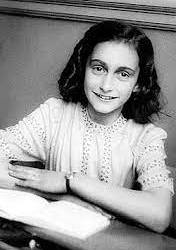
Annelies Marie Frank, mejor conocida como Ana Frank, fue una niña alemana de ascendencia judía nacida en Fráncfort del Meno en junio de 1929.
Es conocida mundialmente gracias al Diario de Ana Frank, una edición de su diario íntimo en donde deja constancia de su ocultamiento junto con su familia por casi dos años y medio de la persecución nazi en Amsterdam durante la Segunda Guerra Mundial.
Fue la segunda hija de Otto Heinrich Frank y de Edith Hollander quienes vivían en una comunidad asimilada de ciudadanos judíos y otros que no lo eran, pues la comunidad albergaba familias judías católicas y protestantes.
Los Frank eran judíos reformistas, es decir que mantenían muchas tradiciones de la fe judía pero no se alineaban demasiado a sus preceptos.
Su padre había participado como teniente del Ejercito Alemán durante la Primera Guerra Mundial y después se volvió empresario.
La hermana de Ana, Margot, era tres años mayor que Ana y se le tenia por bondadosa, ejemplar y discreta, en tanto que a Ana, era extrovertida e impulsiva.
En marzo de 1933, antes de la toma del poder de Adolf Hitler, se mudaron Aquisgrán, la casa de la abuela de Ana, y posteriormente en 1934 se mudaron a Amsterdam en donde Otto Frank llevaba ya varios meses preparando su futura vida familiar, siendo encargado de la sucursal holandesa de la empresa alemana Opekta.
Ana y su hermana estudiaron en escuelas publicas y una de sus mejores amigas Hannah Goslar, a quien llamaban Hanneli contó posteriormente que Ana a menudo escribía en secreto y no quería decir nada del contenido de sus escritos.
A los judíos exiliados les preocupaba la posible expansion de Hitler a los Países Bajos, los cuales intentaban mantenerse neutrales, pero en mayo de 1940, el ejercito aleman atacó y ocupó el país.
Con el paso del tiempo cada día se publicaban más leyes anti-judías que les quitaban sus derechos, se les excluía de la vida social y se les expulsaba de todas las instituciones públicas.
La empresa que llevaba Otto Frank tuvo que ser cedida a dos colaboradores suyos que eran arios. Para entonces, Otto Frank ya había preparado un escondite en la parte trasera de la empresa, compuesta de tres plantas unidas a la fachada posterior del edificio principal, el primer piso, contaba con dos habitaciones pequeñas con baño y WC y por encima una habitación grande y una pequeña, que en total ocupaba 50 metros cuadrados.
El 5 de julio de 1942, Margot Frank fue requerida para ser deportada a un campo de trabajo, por lo que la familia Frank decidió huir al refugio antes de lo esperado llevando toda la ropa que pudieron y caminando varios kilómetros pues les estaba prohibido utilizar el servicio de transporte público.
Miep Gies, quien había sido secretaria de Otto Frank era la encargada de suministrarles víveres y noticias de la guerra. Ana leyó muchos libros durante ese tiempo lo que le sirvió para mejorar su estilo y convertirse en escritora autónoma. Ana escribía sobre sus sentimientos, creencias y ambiciones, así como de los hechos transcurridos. Su anotación final fue el 1 de agosto de 1944.
Ana, su familia y acompañantes fueron arrestados el 4 de agosto de 1944, (se dice que un empleado de la compañía los delató por miedo a sufrir represalias contra su familia), siendo Margot y Ana deportados un mes en Auschwitz II-Birkenau y luego fueron enviadas al campo de concentración de Bergen-Belsen en donde murieron ambas de tifus en marzo de 1945, poco antes de la liberación.
Solo Otto Frank logró sobrevivir del Holocausto. Su ex-secretaria Miep Gies, quienes habían protegido y escondido el diario de Ana, le entregaron el diario a Otto, con el fin de publicarlo con el titulo “Diario de Ana Frank” el cual ha sido publicado en mas de 70 idiomas.
Fuente: Wikipedia.
#citas de la vida#citas de escritores#ana frank#alemania#siglo xx#escritores#frases de escritores#1900s#segunda guerra mundial
14 notes
·
View notes
Video
youtube
POLONIA
Polonia es un país que tiene mucho que ofrecer a los viajeros que buscan cultura, historia, naturaleza y gastronomía. Aquí te doy algunas razones para visitar Polonia: 🎄⛄ En invierno te sugerimos una escapada a algunas ciudades con arraigadas tradiciones navideñas como Cracovia, Varsovia o Wrocław, o al Parque Nacional de Białowieża, donde podrás hacer fotos de bisontes en libertad que le darán un toque especial a tu VIAJE. Solo necesitas tu DNI y la tarjeta sanitaria europea (para ciudadanos de UE). ✳️Polonia tiene un rico patrimonio arquitectónico y cultural, con varios lugares declarados Patrimonio de la Humanidad por la UNESCO. Podrás admirar el casco antiguo de Varsovia, reconstruido tras la Segunda Guerra Mundial, la plaza más grande de Europa en Cracovia, las impresionantes minas de sal de Wieliczka o el campo de concentración de Auschwitz-Birkenau, entre otros. ✳️Cuenta con una historia fascinante y trágica, que ha marcado su carácter y su identidad. Podrás aprender sobre las invasiones, las particiones, las guerras, las resistencias y las transformaciones que ha vivido este país a lo largo de los siglos, y conocer a sus personajes más ilustres, como Nicolás Copérnico, Federico Chopin o Juan Pablo II. ✳️Su naturaleza es diversa y hermosa, ofrece paisajes para todos los gustos. Podrás disfrutar de las montañas de los Tatras, las playas del mar Báltico, los lagos de Mazuria, las dunas de arena de Slowinski o los bosques de Bialowieza. ✳️Posee una gastronomía deliciosa y variada, que refleja las influencias de las distintas culturas que han pasado por su territorio. Podrás degustar platos típicos como los pierogi (empanadillas rellenas), el bigos (guiso de carne y col), el zurek (sopa agria de centeno) o el sernik (tarta de queso), acompañados de una buena cerveza o un vodka. Pero hay muchas más!!!
3 notes
·
View notes